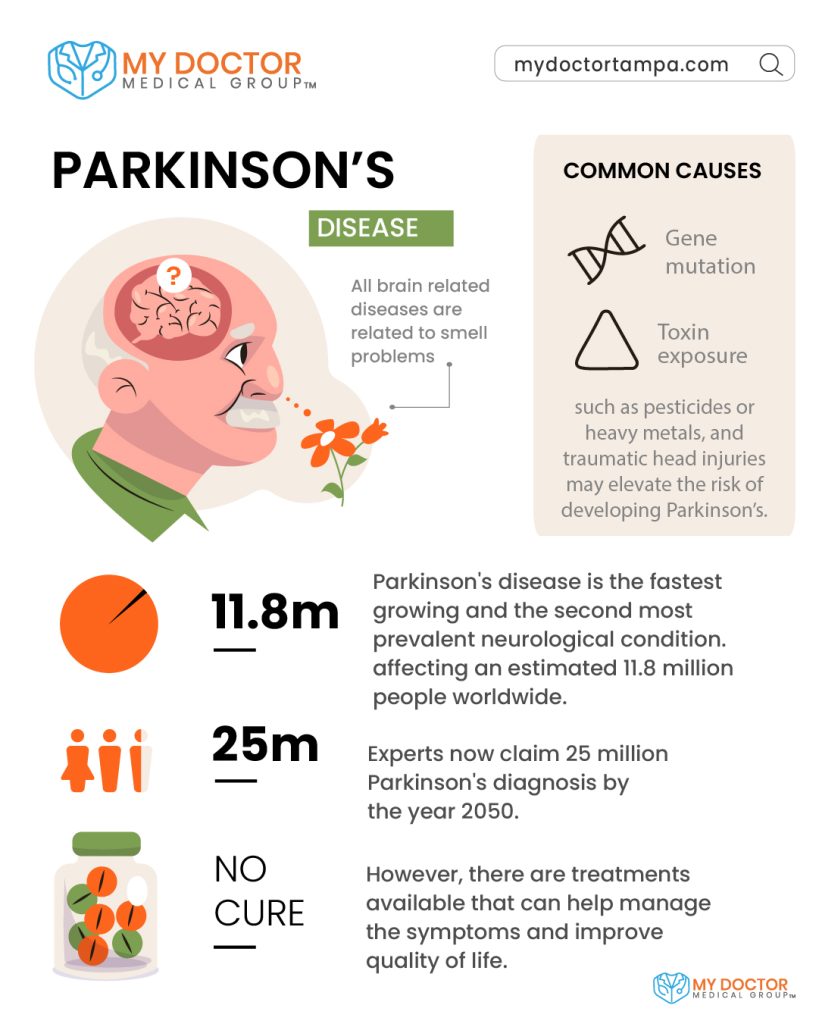World Parkinson’s Day 2025.
When you’re first learning about Parkinson’s disease, it can be difficult to know where to begin. You may find yourself asking questions like:
“How do I raise awareness about Parkinson’s?” “How can I connect with others who understand?” “What can I do to help make a difference?” And perhaps most importantly: “How can we all come together to support those affected?”
The good news is: you’re not alone. On World Parkinson’s Day, we have the opportunity to come together, raise awareness, and take action. Here’s how you can get involved and make a lasting impact.
What is Parkinson’s?
Parkinson’s disease is a neurological condition that affects the brain’s ability to produce dopamine, a chemical crucial for controlling movement. Dopamine plays a significant role in coordinating muscle movements, and when its production is impaired, it leads to the symptoms associated with Parkinson’s.
Parkinson’s is a progressive condition, meaning its symptoms gradually appear and worsen over time as the brain becomes increasingly damaged. Although Parkinson’s can be life-altering, it is not typically life-threatening. While some of the more advanced symptoms may make individuals more susceptible to infections, most people with Parkinson’s will not see a significant reduction in life expectancy.

Symptoms of Parkinson’s Disease | World Parkinson’s Day
Parkinson’s symptoms are typically classified into two main groups:
- Motor Symptoms – These symptoms affect movement and include: Tremors (shaking) | Muscle rigidity (stiffness) | Slowness of movement (bradykinesia)
- Non-Motor Symptoms – These symptoms affect various other aspects of health and include:
Pain | Anxiety | Depression
Parkinson’s disease is not just a motor disorder that affects movement. In fact, there are over 40 potential symptoms that can impact a person’s quality of life, including issues with mood, sleep, pain, gut health, and constipation. While tremors and other motor symptoms are well-known, many other symptoms, such as depression and loss of speech, can be invisible to others, making those with the disease feel even more isolated.
Need a doctor nearby? If you’re in Tampa or Brandon, FL, we invite you to discover our services or call us at (813)280-4909 ( Tampa Location ) , (813) 697-1888 ( Brandon Location )
What causes Parkinson’s?
Parkinson’s disease occurs when neurons in a part of the brain called the substantia nigra gradually lose their ability to produce dopamine. Dopamine is a vital chemical messenger responsible for controlling movement and coordination. As dopamine levels decline, individuals begin to experience motor symptoms typical of Parkinson’s, such as tremors, stiffness, slowness of movement, and issues with balance.
Although the exact cause of dopamine-producing neuron loss is not yet fully understood, several factors are thought to contribute to the condition:
- Genetics: Some individuals inherit genetic mutations that increase their risk, including mutations in genes like LRRK2, PARK7, PINK1, or SNCA.
- Environmental factors: Exposure to certain toxins, such as pesticides or heavy metals, and traumatic head injuries may elevate the risk of developing Parkinson’s.
- Age: The likelihood of developing Parkinson’s rises significantly with age, particularly after the age of 60.
- Mitochondrial dysfunction: Problems with the mitochondria, which are the cell’s energy producers, may play a role in the death of dopamine-producing neurons.
- Lewy bodies: Abnormal protein clusters, primarily composed of alpha-synuclein, are commonly found in the brains of people with Parkinson’s. These clumps are thought to contribute to the damage of brain cells.
Does Parkinson’s have a cure?
Currently, there is no cure for Parkinson’s disease. However, there are treatments available that can help manage the symptoms and improve quality of life. Researchers around the world are actively working to better understand the disease and develop more effective therapies and ultimately, a cure.
Fascinating Facts About Parkinson’s
- Parkinson’s disease is the fastest growing and the second most prevalent neurological condition, affecting an estimated 11.8 million people worldwide.
- From 1990 to 2015, the number of people with Parkinson disease doubled to over 6 million. Experts now claim 25 million Parkinson’s diagnosis by the year 2050.
- The book Ending Parkinson’s Disease: A Prescription for Action calls Parkinson’s a man-made pandemic. This means that Parkinson’s is a disease that affects a large number of people across the world, much like a pandemic. Unlike pandemics caused by viruses or bacteria, Parkinson’s is caused by factors such as urbanization, aging populations, globalization, and the widespread availability of unhealthy products like fast food.
- Parkinson’s disease is a condition that can affect anyone, regardless of their gender, ethnicity, age, or where they live. Even young people can develop Parkinson’s, with about 10 to 20 percent of people experiencing symptoms before they turn 50. This is called “young onset,” and while treatments are similar, the disease may affect younger people differently. Scientists are currently studying the causes of young-onset Parkinson’s to better understand the condition.
Sources:
https://worldparkinsonsday.com/
https://parkinsonseurope.org/campaigns/world-parkinsons-day/
